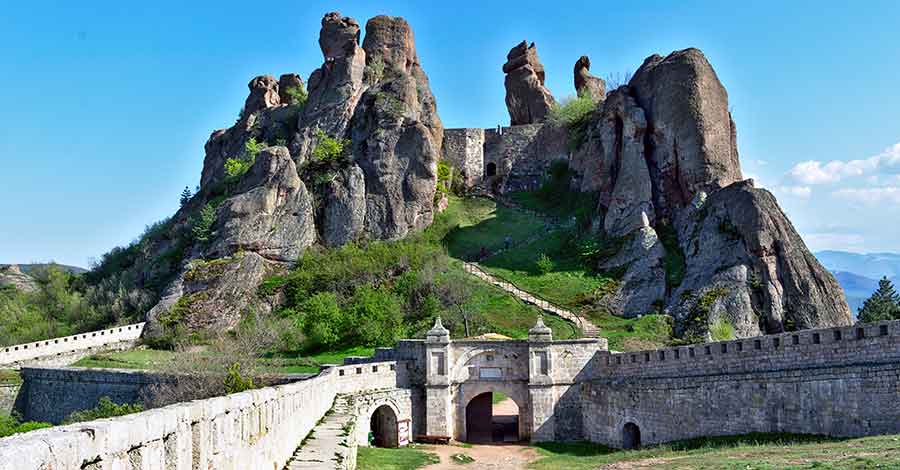I saw a picture of the Kaleto Fortress on a computer screen saver and decided it was a place I would add to my bucket list as a place to visit.
About the Kaleto Fortress, Belogradchik.
The Kaleto Fortress is an ancient fortress located on the north slopes of the Balkan Mountains, close to the northwestern Bulgarian town of Belogradchik. It is one of the best-preserved strongholds in Bulgaria. The fortress walls are over 2 metres thick in the foundation and reach up to 12 metres in height. Three separate fortified yards are connected through gates. The fortress has a total area of 10,210 square metres.
The initial fortress was constructed when the region was part of the Roman Empire. The rock formations in the area served as natural protection, as fortified walls were practically only built from the northwest and southeast, with the yard being surrounded by rocks up to 70 m high from the other sides.
Initially, the Belogradchik Fortress served for surveillance and not strictly defence. The Bulgarian tsar of Vidin, Ivan Stratsimir, extended the old fortress in the 14th century, building fortified garrisons in front of the existing rock massifs. During Stratsimir's rule, the Belogradchik Fortress became one of the most important strongholds in the region, second only to the tsar's capital fortress of Vidin, Baba Vida.
During the Ottoman conquest of Bulgaria, the fortress was captured by the Ottomans in 1396. They were forced to further expand the stronghold due to the intensified hajduk and insurrectionist activity in the region.
Considerable changes to the fortress were made in the early 19th century. These changes were typical for the Ottoman castle architecture of the period, with a full reorganization being carried out, as well as additional expansion. Typically, European elements were added to the Belogradchik Fortress owing to the French and Italian engineers who participated in the expansion.
The stronghold had an important role in the Ottoman suppression of the Bulgarian Belogradchik Uprising of 1850. It was last used in warfare during the Serbo-Bulgarian War in 1885.
